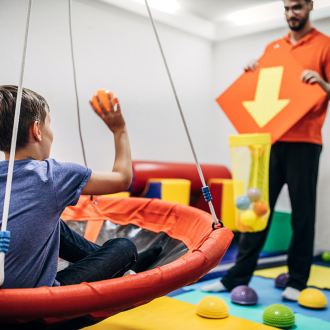Children with sensory processing disorders may have difficulties in learning at school as compared to children with no. For instance, children with ADHD may experience difficulties in focusing. As a result, their experience in the classroom may be difficult and frustrating.

This means that educational institutions need to be aware of sensory processing disorders and how to work with children with them. One of the problems these children is the lack of awareness on their conditions. That results to them being prejudiced against at schools. For example, they may be punished because of not concentrating in class yet it is not their fault. It may be harder for children in rural schools.
It is important for teachers to be trained on how to take care of them. This promotes sensory inclusivity. Schools should take time and train teachers by consulting occupational therapists. Furthermore, government should allocate funds towards their training and the acquisition of sensory equipment.

Strategies to promote inclusivity in the classroom:
- Having a daily routine: This routine should have minimal changes. Furthermore, the children would have to be informed prior of any changes to their routine. Children with sensory disorders need to know what to expect. This allows them to easily follow instructions.
- Use of multiple work stations: Some of your kids can be susceptible to visual stimuli, such as wall art or displays hanging from the ceiling. The student may also be sensitive to touch and find it difficult to focus when placed too near to another child. Children can better locate an area of the classroom that satisfies their sensory needs if you let them transfer workstations throughout the day. They may choose to look away from vibrant wall art or choose to sit in a quieter location of the classroom to avoid getting bumped by other students.
- Having breaks in between lessons: The breaks allow them to unwind. You could also include movement breaks. Children need lots of movement throughout the day to build healthy sensory systems. Try to allow playtime on the playground before school starts, and schedule regular movement breaks every 20-40 minutes throughout the day. Examples include push-ups off the back of a chair, star jumps, or basic stretches.
- Have break away rooms: These rooms allow children to experience some relaxation and unwind. This is important, especially for those who have experienced overstimulation.
- Incorporation of sensory tools in learning: You could use sensory tools which will stimulate their senses. For example, chewy toys offer relaxation to the students. That is important for those who have experienced sensory overload.
- Improving student participation: The students should be encouraged to participate in activities in the classroom. One of the ways of doing this is by incorporation of hands-on activities. For example, finger painting allow stimulates touch and actively engages them.
- Reducing the number of distractions: As a teacher, you need to identify possible distractions and work on reducing them. For example, lights may affect these children. You should be able to control the light. For children who are affected by bright light, the teacher should work on controlling the light source by dimming it.

It is important for educational institution to find ways of promoting inclusivity in the classroom for children with sensory processing disorders. The government should also work on it. This is in line with children’s right to education.
We at SmartSensory are focused on providing sensory solutions to you. We also offer consultation services. Contact us at (+254) 742 776 789 or through our website https://thesmartsensory.com/.
